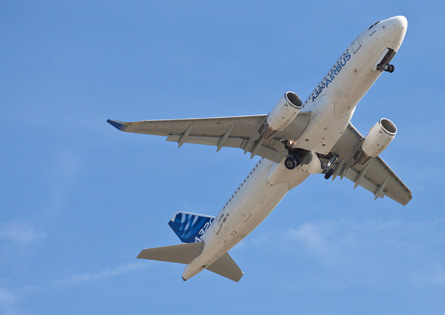Airbus will start test-flying the first A321 with sharklet wing-tips this autumn, as it wraps up testing A320s with the fuel-saving modification.
The airframer will conduct its first display routine with a sharklet-equipped A320 when MSN5098 carries out a demonstration at the ILA show, rehearsals for which were performed yesterday.
 |
|---|
| Asharklet-equipped A320 at ILA yesterday Copyright: BillyPics |
Its routine involves a 180kt (330km/h) steep climb to 1,500ft (460m) before a sharp turn back to the display area and a 360˚ orbit at 1,000ft. The A320 then returns and descends to 600ft to execute a slow pass at 120kt, with gear up, before climbing to 2,200ft and turning to land. Test pilots Christophe Cail and Martin Scheuermann will be crewing the jet.
MSN5098 is a CFM International CFM56-powered twinjet but Airbus also began testing an International Aero Engines V2500-equipped version, bearing Qatar Airways colours, in July.
Tests with these aircraft have been complementing the early flight-test campaign with the MSN1 A320 testbed.
Sharklets are intended to shave 3.5% off fuel-burn over longer sectors. They will enter service on CFM56-equipped A320s from the fourth quarter of this year and on the V2500 aircraft from the first quarter of 2013, although Airbus has yet to disclose which customers will be the first to receive them.
Airbus says it plans to put the first sharklet-fitted A321 into the programme in autumn.
It expects to perform 250h of tests, lasting some five months, carrying out back-to-back assessments with the regular wing-tip fence variant because the A321's wing structure differs from the A320's.
Sharklet-equipped A321s will be test-flown with both engine options and both types will enter service in the third quarter of 2013.
"We need to certify individually every combination of aircraft model and engine selection," says the airframer.
Testing of the modified A319 will be shorter, running to 120h, with the CFM56 version becoming available in the second quarter of 2013. The V2500 variant will follow in the third quarter, while the A318 - being tested for 90h, and only with CFM56 engines - will enter service in the fourth.
Source: Flight Daily News























